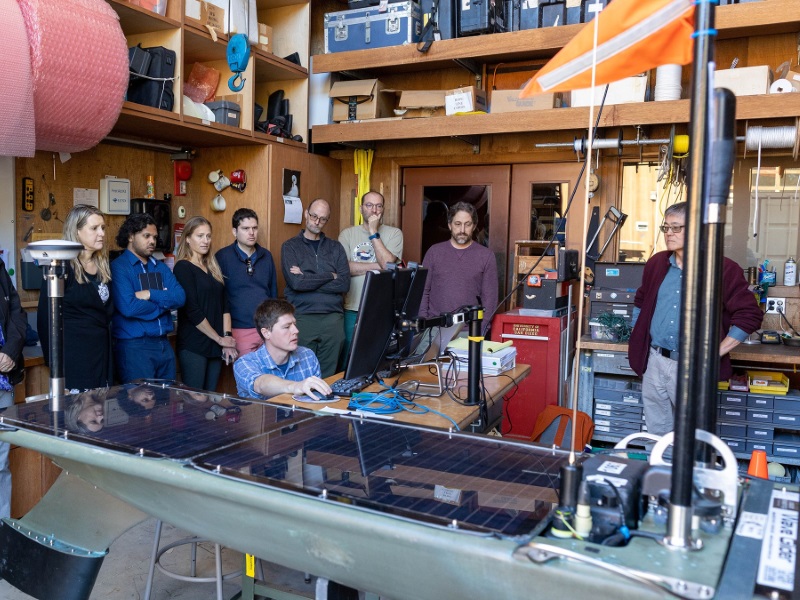
Ocean Robotics Planet Articles
Articles for Tag or Tags: Scripps Institution Of Oceanography
Number of matching Articles: 5
Monitoring the Seabed and Cultivating a Community
16.01.2024
Sonardyne held a two-day Seabed Deformation Technical Workshop bringing together some key members of the Sonardyne academic user community in the USA and Canada to share insights, experiences and how our GNSS-A and AZA instruments can be further improved to meet their future needs.
Scientists Discover New Hydrothermal Vents and Possible New Species in the Gulf of California
22.11.2021
A multidisciplinary team of scientists from Mexico and the U.S. discovered new hydrothermal vents and six possible new animal species during a 33-day expedition off the coast of La Paz on Schmidt Ocean Institute's research vessel Falkor. The underwater robot ROV SuBastian was used to explore and sample vents emitting fluids at temperatures up to 287°C (549°F) along with the unique animal communities inhabiting this extreme environment. ROV SuBastian additionally captured
stunning imagery of the seafloor including hydrothermal mirror pools, calcite spires, and iridescent blue scale worms.
Sonardyne Wins Queen’s Award for Enterprise in Innovation for Unlocking the Secrets of our Restless Sea Floor
29.04.2021
A pioneering system developed by marine technology company Sonardyne to study ocean floor movement has been recognised with a Queen’s Award for Enterprise in Innovation, the highest award a UK business can receive.
New $53 Million Grant to Create a World-Wide Fleet of Robotic Floats to Monitor Ocean Health
29.10.2020
On October 29, 2020 the National Science Foundation (NSF) approved a $53 million grant to a consortium of the country’s top ocean-research institutions to build a global network of chemical and biological sensors that will monitor ocean health. Scientists at the Monterey Bay Aquarium Research Institute (MBARI), University of Washington, Scripps Institution of Oceanography at UC San Diego, Woods Hole Oceanographic Institution, and Princeton University will use this grant to build and deploy 500 robotic ocean-monitoring floats around the globe.
Acoustic Devices Help Researchers and Marine Scientists
06.05.2016
Attempting to relocate underwater objects in open ocean or a low visibility environment can be a difficult and time consuming task. Acoustic pingers and transponders solve this problem. These acoustic beacons are attached to an underwater site or instrument package and transmit a sonar signal. A gun-like device, either carried by a diver or deployed from a boat, detects the signal and guides the operator directly to the beacon. Today these acoustic devices are being employed by many marine scientists and researchers to keep track of expensive oceanographic equipment allowing instruments to be quickly relocated and retrieved.










